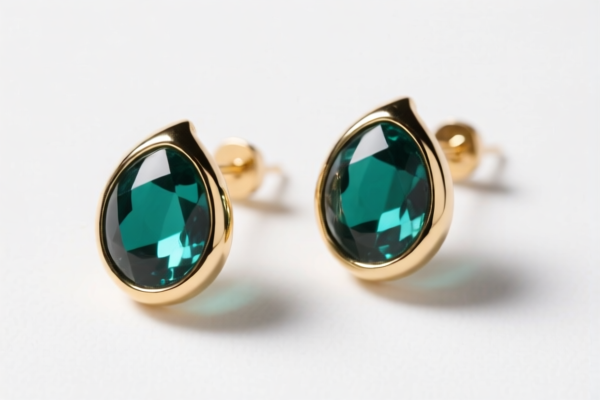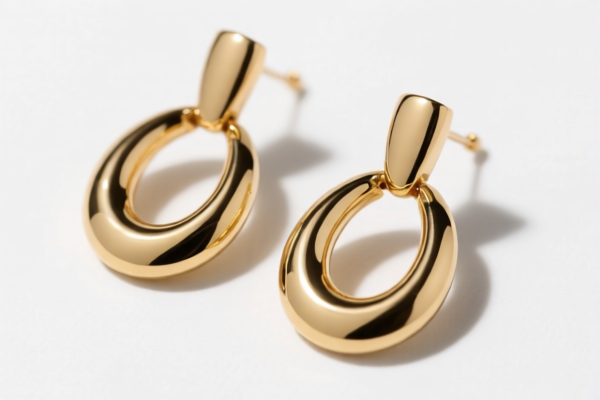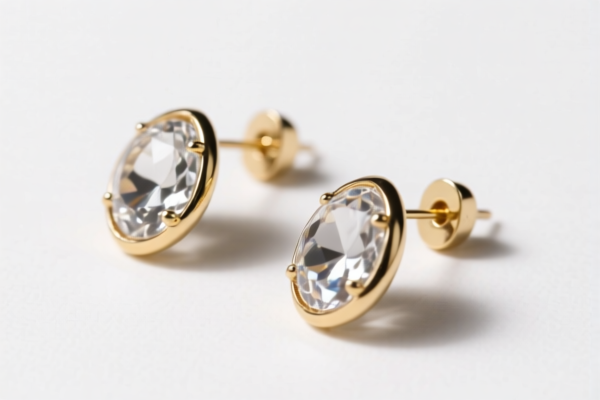| HS Code | Official Doc | Tariff Rate | Origin | Destination | Effective Date |
|---|---|---|---|---|---|
| 7113195030 | Doc | 43.0% | CN | US | 2025-05-12 |
| 7113195045 | Doc | 43.0% | CN | US | 2025-05-12 |
| 7116200500 | Doc | 33.3% | CN | US | 2025-05-12 |
| 7116201500 | Doc | 44.0% | CN | US | 2025-05-12 |
| 9606220000 | Doc | 55.0% | CN | US | 2025-05-12 |
| 9606296000 | Doc | 57.9% | CN | US | 2025-05-12 |
| 9608996000 | Doc | 37.5% | CN | US | 2025-05-12 |
| 9608910000 | Doc | 37.5% | CN | US | 2025-05-12 |




Earring Posts
Earring posts are the visible portion of a post earring that passes through the ear piercing to secure the earring. They are a fundamental component of many earring styles and are available in a variety of materials, lengths, and mechanisms.
Materials
Earring posts are constructed from a range of materials, each with varying properties regarding sensitivity, durability, and cost:
- Stainless Steel: A common, affordable option. Hypoallergenic for most, but can still cause reactions in highly sensitive individuals. Durable and resistant to tarnishing.
- Surgical Steel: Contains a lower percentage of nickel than standard stainless steel, making it more suitable for sensitive ears.
- Titanium: Highly hypoallergenic, lightweight, and strong. Often recommended for initial piercings and those with severe allergies.
- Gold: Available in various karats (purity levels). Higher karat gold (e.g., 14k, 18k) contains less alloy and is less likely to cause irritation. Yellow gold, white gold, and rose gold are common choices.
- Sterling Silver: A popular choice for its affordability and shine. However, it is prone to tarnishing and can cause reactions in some individuals. Requires regular cleaning.
- Niobium: A highly biocompatible metal, often used in medical implants. Lightweight, hypoallergenic, and does not tarnish.
- Platinum: A rare and expensive metal. Extremely hypoallergenic and durable.
Purpose
The primary purpose of earring posts is to securely hold earrings in place while minimizing discomfort and the risk of allergic reactions. They act as the anchor point for the earring, preventing it from falling out or causing irritation.
Function
Earring posts function through a simple mechanism: the post is inserted through the ear piercing and held in place by a backing (e.g., butterfly clutch, screw back). The backing prevents the earring from sliding back out of the piercing.
Usage Scenarios
Earring posts are utilized in a wide range of earring types, including:
- Stud Earrings: The most common application, where the post directly supports the decorative element.
- Drop Earrings: Used to connect the decorative element to the earlobe.
- Dangle Earrings: Similar to drop earrings, but with more movement.
- Hoop Earrings (post-backed): Provide a secure closure for hoop designs.
Common Types of Backings
The backing is crucial for the functionality of an earring post:
- Butterfly Clutch: The most common type. Features a curved metal piece that slides onto the post.
- Screw Back: Features a threaded screw that tightens onto the post. Offers a more secure closure, especially for valuable earrings.
- La Push Back: A secure alternative to butterfly clutches, featuring a locking mechanism.
- Friction Post: Relies on friction to hold the earring in place. Less secure than other options.
- Lever Back: Commonly used for dangle earrings, featuring a hinged lever that snaps closed around the post.
Earrings posts fall under the category of jewelry articles and parts thereof, specifically those made of precious metal or metal clad with precious metal.
Here are the relevant HS codes based on the provided reference material:
- 7113195030: This HS code covers articles of jewelry and parts thereof, of precious metal or of metal clad with precious metal; of precious metal, whether or not plated or clad with precious metal; of other precious metal, whether or not plated or clad with precious metal; other: of ISO standard platinum: earrings. This code is specifically for earrings made of ISO standard platinum. The first two digits (71) indicate the chapter for precious stones, precious metals, and imitation jewelry. The next four digits (1319) specify jewelry and parts thereof, of precious metal or metal clad with precious metal. The final digits (5030) further define the material as ISO standard platinum earrings.
- 7113195045: This HS code covers articles of jewelry and parts thereof, of precious metal or of metal clad with precious metal; of precious metal, whether or not plated or clad with precious metal; of other precious metal, whether or not plated or clad with precious metal; other: other. This code is for earrings made of other precious metals. The first two digits (71) indicate the chapter for precious stones, precious metals, and imitation jewelry. The next four digits (1319) specify jewelry and parts thereof, of precious metal or metal clad with precious metal. The final digits (5045) further define the material as other precious metals.
Tax Rate Information:
Both HS codes 7113195030 and 7113195045 share the following tax details:
- Basic tariff: 5.5%
- Additional tariff: 7.5%
- Tariff after April 2, 2025: Additional tariff of 30%
- Total tariff: 43.0%
Important Note:
The applicable tariff rate will change after April 2, 2025, with an additional tariff of 30% being applied.
Customer Reviews
No reviews yet.